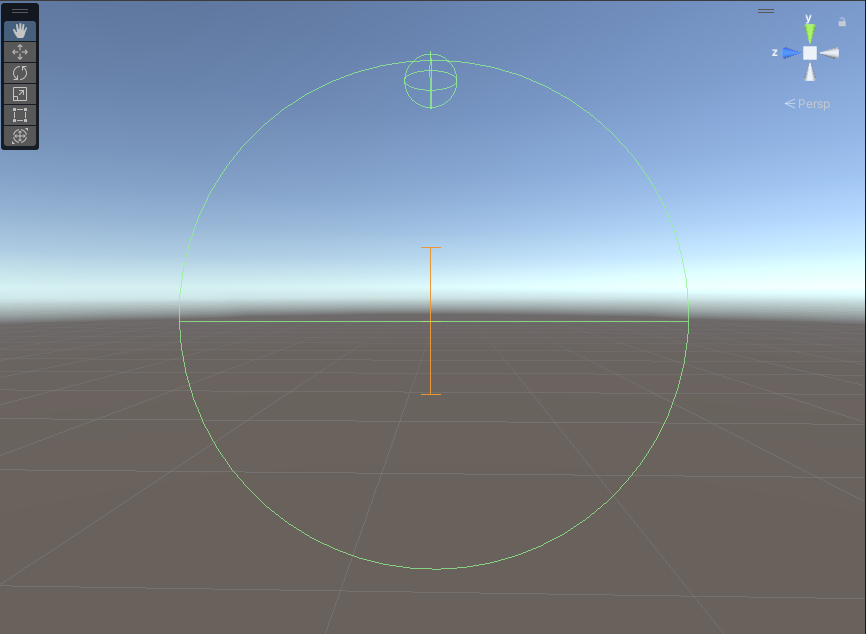- Unity User Manual 2023.2
- 物理演算
- ビルトインの 3D 物理演算
- 衝突
- Collider shapes
- Wheel colliders
- Introduction to Wheel colliders
Introduction to Wheel colliders
To simulate accurate wheel behavior in Unity, you use a Wheel collider for each wheel. Wheel colliders manage wheel rotation and vehicle movement, and also have properties that simulate a suspension system.
The Wheel collider component is represented in the API as the WheelCollider class.
Wheel collider raycast
The Wheel collider appears in the Scene view as a 2D circle (see Wheel collider visualization). However, it is actually a single Physics raycast. PhysX casts the ray down the local Y-axis along the direction of suspension through the center of the wheel. The start and end of the raycast are at the following points:
- The raycast starts just above the top of the wheel at maximum suspension compression (that is, just outside the Radius, at the top of the Suspension Distance on the Y axis).
- The raycast ends just below the bottom of the wheel at maximum suspension extension (that is, just outside the Radius, at the bottom of the Suspension Distance on the Y axis).
This raycast configuration means that a Wheel collider does not actually roll across other surfaces (such as the ground) while moving. In Play mode, the rotation of the Wheel collider does not change. However, the rotation of the wheel model does need to change so that the wheel appears to roll along the ground. To achieve this, the model and the collider need to be on two separate GameObjects. The Wheel colliders’ Transform should be fixed relative to the vehicle, and the models should be able to rotate. You can then configure the Wheel collider to send its global position to the wheel model and rotate the wheel model via script. For an example of this workflow, refer to the walkthrough Create an example vehicle with Wheel colliders.
For more details on the Wheel collider raycast setup in PhysX, refer to the PhysX 4.1 Vehicles SDK documentation.
Prepare the ground for raycast Wheel colliders
An important implication of the raycast setup is that wheels don’t always smoothly roll up or step down variations in road level (for example, rolling up from the road onto a step). When encountering a step or curb, the wheel is likely to clip and then “pop” up only as the center line crosses the step:

The raycast can also slip down into small drops or steps in the road when the center point reaches them:

For this reason, the ground collision geometry must be as smooth as possible to ensure a smooth and accurate simulation. If you have bumps or dips in the ground, you must test and iterate on them to make sure you are happy with the wheels’ behavior.
Wheel collider visualization
When you select a Wheel collider, the Scene view displays a gizmo which provides a visualization of some key Wheel collider properties.

The gizmo’s visual indicators are as follows:
- Large 2D circle: Represents the size of the physics wheel. To change the size, use the Wheel collider’s Radius property.
- Horizontal green line: Represents the halfway point of the Wheel collider along the X axis. The angle of this line represents the rotation of the wheel.
- Small 3D sphere: Represents the point where the wheel forces are applied. To change this value, use the Wheel collider’s Force App Point Distance property.
- Vertical orange line: The top and bottom points of the line represent the maximum distances that the wheel can move up and down (along the vertical Y axis) from its central point as a result of forces applied to it. To change this value, use the Wheel collider’s Suspension Distance property. The point where the orange line intersects the green line represents the “resting” point where the wheel sits when there are no forces or equal forces acting upon it. To change this value, use the Wheel collider’s Target Position property.
You can use the gizmo visualization for quick reference and debugging.